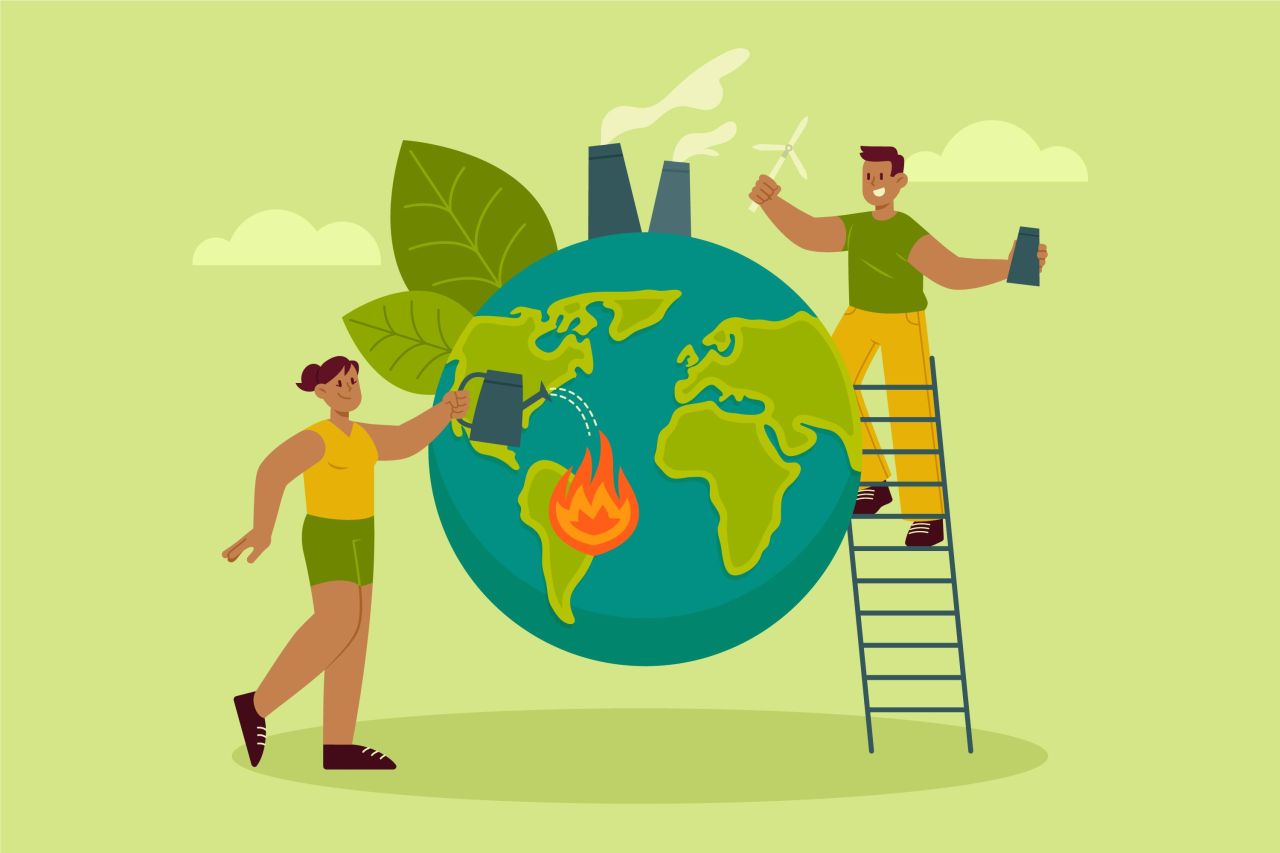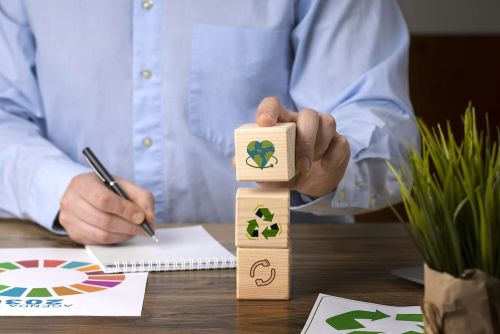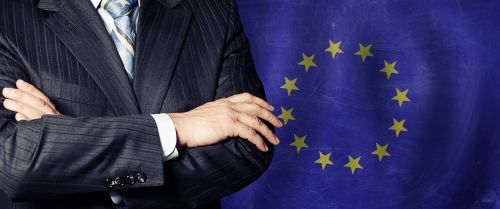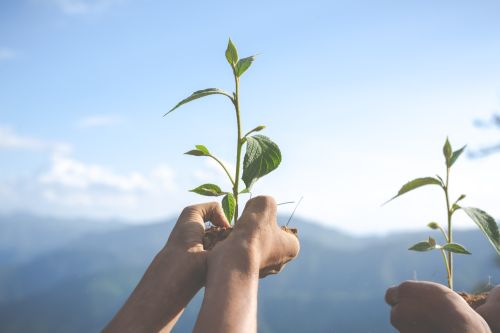Circular Economy Innovations: Sustainable Materials, Design, and Business Models


Cut through the green tape
We don't push agendas. At Net Zero Compare, we cut through the hype and fear to deliver the straightforward facts you need for making informed decisions on green products and services. Whether motivated by compliance, customer demands, or a real passion for the environment, you’re welcome here. We provide reliable information—why you seek it is not our concern.
Introduction to Circular Economy: A New Paradigm
In recent years, the concept of the circular economy has emerged as a transformative approach to the way we produce, consume, and manage resources. Unlike the traditional linear economy, which follows a "take-make-dispose" model, the circular economy is designed to keep resources in use for as long as possible, extracting maximum value from them before recovering and regenerating materials at the end of their service life. This shift from a linear to a circular model is not just a trend but a necessary evolution in response to the growing challenges of resource depletion, environmental degradation, and economic volatility.
The Linear Economy: A Resource-Intensive Model
The traditional linear economy operates on the principle of extracting raw materials, manufacturing products, and ultimately discarding them as waste after their use. This model has driven economic growth for decades, but it comes with significant environmental costs. The linear approach is inherently wasteful, as it relies on a constant influx of new resources and generates large quantities of waste, often leading to pollution, habitat destruction, and the depletion of natural resources. Furthermore, as global demand for resources continues to rise, this model becomes increasingly unsustainable, leading to resource scarcity and higher costs for businesses and consumers alike.
The Circular Economy: A Sustainable Alternative
In contrast, the circular economy seeks to decouple economic growth from resource consumption by creating a closed-loop system where products, materials, and resources are continuously cycled back into the economy. This is achieved through strategies such as recycling, reusing, refurbishing, and remanufacturing, as well as designing products that are durable, repairable, and upgradable. By maintaining the value of products and materials within the economy for as long as possible, the circular economy minimizes waste, reduces the need for new resources, and lowers environmental impacts.
Why the Circular Economy Matters
The transition to a circular economy is crucial for several reasons. Environmentally, it offers a pathway to reduce waste, cut greenhouse gas emissions, and preserve natural ecosystems. By minimizing the extraction of raw materials and promoting the use of recycled and renewable resources, the circular model helps mitigate the environmental degradation associated with resource extraction and waste disposal.
Economically, the circular economy fosters resilience by reducing dependency on volatile resource markets and creating new business opportunities. Companies can benefit from cost savings through more efficient resource use, while also tapping into new revenue streams by offering services such as product leasing, repair, and refurbishment. Additionally, the circular economy can drive innovation, as businesses are encouraged to rethink product design, develop new materials, and adopt cutting-edge technologies to enable circular practices.
In the context of global challenges such as climate change, resource scarcity, and economic instability, the circular economy presents a compelling vision for a more sustainable and resilient future. It is not merely an alternative to the linear model but a necessary evolution that aligns economic activity with the principles of sustainability, ensuring that we can meet the needs of the present without compromising the ability of future generations to meet their own needs.
Innovative Materials and Product Design
Biodegradable Plastics
Biodegradable plastics are emerging as a sustainable alternative to traditional petroleum-based plastics, which are notorious for their environmental persistence. These new materials are designed to break down more easily in natural environments, reducing the burden on landfills and oceans. For instance, polylactic acid (PLA), derived from renewable resources like corn starch, is a popular biodegradable plastic used in packaging, disposable cutlery, and even 3D printing. Unlike conventional plastics, PLA decomposes into water and carbon dioxide under industrial composting conditions, significantly reducing its ecological footprint.

Mycelium-Based Packaging
Mycelium, the root structure of fungi, is gaining attention as an eco-friendly packaging material. Mycelium-based packaging is grown by allowing fungal mycelium to bind together agricultural waste, forming a lightweight, durable, and biodegradable material. Companies like Ecovative Design are pioneering this innovation, offering mycelium packaging as a replacement for polystyrene foam and other non-biodegradable materials. This not only reduces waste but also creates a product that naturally decomposes, returning nutrients to the soil.
Recyclable Textiles
The fashion industry, known for its environmental challenges, is seeing a shift towards recyclable textiles. Companies are developing fabrics that can be fully recycled at the end of their life, reducing the need for virgin materials and minimizing textile waste. For example, the Swedish company Renewcell has developed a process that transforms old cotton garments into a new, high-quality material called Circulose. This material can be used to create new clothes, effectively closing the loop in textile production.
Innovations in Product Design
Circular product design focuses on creating items that are durable, repairable, and recyclable. This approach not only extends the life of products but also makes them easier to disassemble and recycle at the end of their lifecycle.
Modular Smartphones: Traditional smartphones are often difficult to repair, leading to a high turnover rate and significant electronic waste. However, companies like Fairphone are changing this with modular smartphones. Fairphone designs its phones to be easily disassembled, allowing users to replace or upgrade individual components such as the battery or camera. This design extends the phone's lifespan and reduces electronic waste, aligning with circular economy principles.
Furniture Designed for Disassembly: The furniture industry is also embracing circular design. Companies like Tvilum and IKEA are developing furniture that can be easily taken apart and reassembled. This not only makes transportation and storage more efficient but also facilitates recycling and repair. For instance, IKEA's disassembly guides help customers extend the life of their furniture, contributing to a more sustainable use of resources.
Circular Business Models: Companies Leading the Way
Beyond innovative materials and product designs, many companies are adopting circular business models that fundamentally rethink how products are created, used, and disposed of. These models focus on extending product life, reducing waste, and maximizing resource efficiency.
Product-as-a-Service
The product-as-a-service model shifts the focus from selling products to providing services. In this model, customers pay for the use of a product rather than owning it outright. This encourages companies to design products that are durable, easy to maintain, and upgradeable, as the responsibility for upkeep remains with the provider.
Example: Philips, a global leader in lighting solutions, offers "Lighting as a Service" to its customers. Instead of selling light bulbs, Philips provides lighting solutions, retaining ownership of the equipment. This model incentivizes Philips to design long-lasting, energy-efficient lighting systems, reducing waste and energy consumption.
Leasing Models
Leasing is another circular business model that extends the life of products by keeping them in circulation longer. In leasing arrangements, customers use a product for a specified period, after which it is returned to the company for refurbishment, reuse, or recycling.
Example: Caterpillar, a leading manufacturer of construction and mining equipment, operates a successful leasing model. Customers can lease equipment, and once the lease period ends, Caterpillar refurbishes the machines and leases them again. This not only maximizes the use of each machine but also minimizes the need for new raw materials.
Take-Back Schemes
Take-back schemes involve companies accepting used products from customers for recycling or refurbishing. This model helps close the loop by ensuring that valuable materials are recovered and reused, rather than ending up in landfills.
Example: Patagonia, the outdoor clothing brand, has implemented a robust take-back program called Worn Wear. Customers can return their used Patagonia garments in exchange for store credit. The returned items are then repaired, resold, or recycled. This initiative has not only reduced textile waste but also fostered customer loyalty by promoting sustainable consumption.
Policy and Regulation: Government’s Role in Fostering Innovation
Governments play a crucial role in advancing the circular economy by creating a favourable environment for innovation through policies, incentives, and regulations. These efforts aim to shift the economy from a linear to a circular model by encouraging businesses, consumers, and public institutions to adopt more sustainable practices.
Extended Producer Responsibility (EPR)
One of the most effective policy tools is Extended Producer Responsibility (EPR), which holds manufacturers accountable for the entire lifecycle of their products, including take-back, recycling, and final disposal. EPR policies incentivize companies to design products that are easier to recycle, repair, or reuse, thereby reducing waste and promoting circularity.
Example: The European Union has implemented EPR regulations for various products, including electronics, packaging, and vehicles. The Waste Electrical and Electronic Equipment (WEEE) Directive, for instance, requires producers to finance the collection, recycling, and disposal of electronic waste. This has led to significant improvements in the recycling rates of electronic products across Europe.
Circular Economy Roadmaps
Several governments have developed circular economy roadmaps to outline strategies, goals, and actions needed to transition to a circular economy. These roadmaps provide a framework for collaboration between the public and private sectors, as well as clear targets for reducing waste and improving resource efficiency.
Example: The Netherlands has set an ambitious goal to become fully circular by 2050, with a 50% reduction in the use of primary raw materials by 2030. The Dutch Circular Economy Program includes initiatives to stimulate circular business models, promote circular procurement, and support innovation in areas such as sustainable materials and product design.
Incentives and Funding
Governments also provide financial incentives, such as grants, tax breaks, and subsidies, to support circular economy innovations. These incentives encourage businesses to invest in circular technologies, research and development, and the adoption of sustainable practices.
Example: In Japan, the government offers subsidies to companies that implement circular economy practices, such as the use of recycled materials or the development of products designed for longevity. Additionally, Japan's "Circular Economy Vision 2020" outlines measures to promote resource efficiency and reduce environmental impact, supported by public funding for innovation.

Future of Circular Economy
Looking ahead, the future of circular economy innovations promises exciting developments across various fields. Emerging trends and breakthroughs are set to further embed circularity into industries and daily life.
Circular Bioeconomy
The circular bioeconomy focuses on using renewable biological resources to create sustainable products, materials, and energy. Innovations in this area include the development of bio-based plastics, sustainable agriculture practices, and biorefineries that convert organic waste into valuable products.
Synthetic Biology
Synthetic biology holds the potential to revolutionize the circular economy by creating organisms and biological systems designed for specific industrial applications. This can include the production of biofuels, biodegradable materials, and even waste-eating bacteria.
As awareness of the circular economy grows, we can expect to see its principles being integrated into new industries.

More related content

What Is Scope 3? Understanding Indirect Emissions and Their Regulat...

The EU's Omnibus Proposal: A Deep Dive

Carbon Accounting vs. Climate Risk Management - What's the Difference
